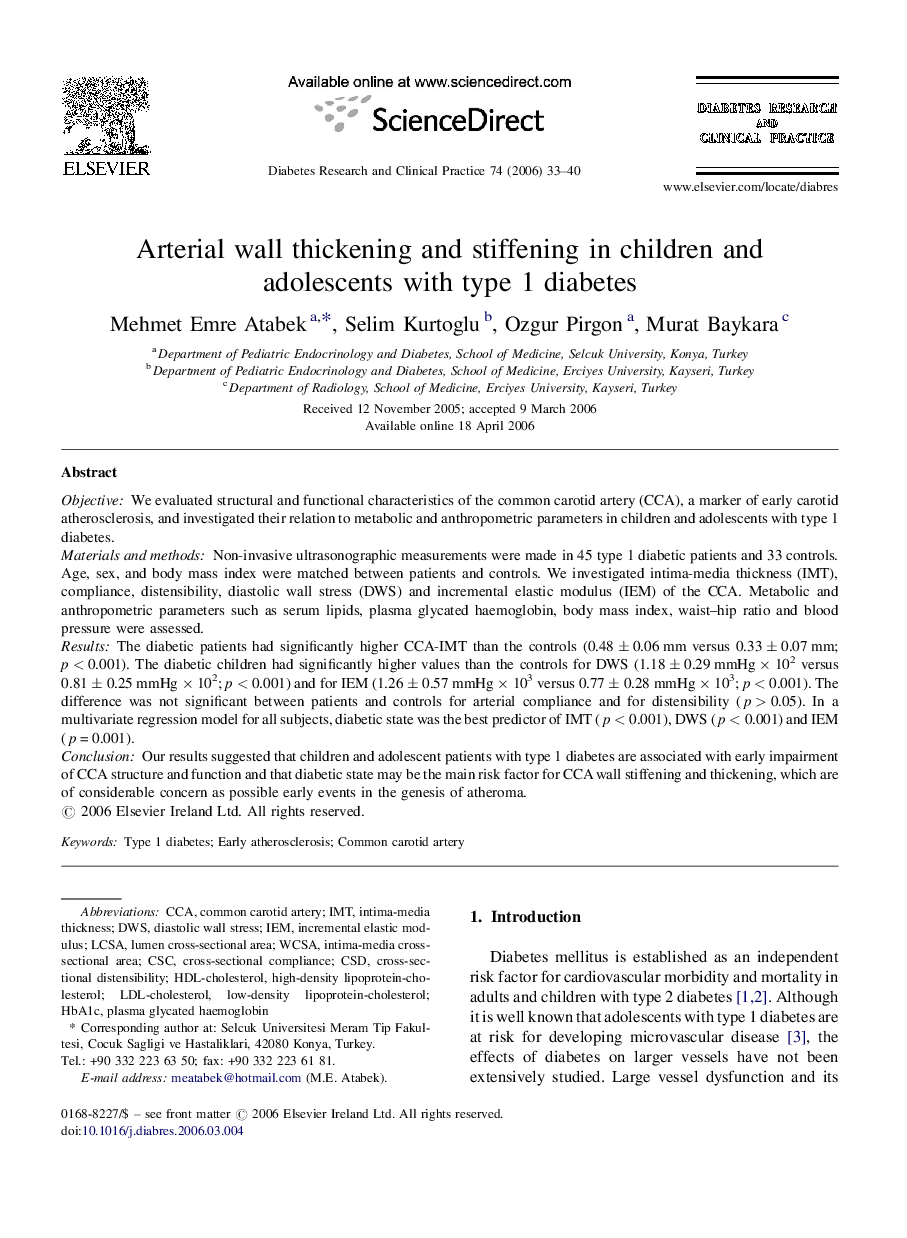| Article ID | Journal | Published Year | Pages | File Type |
|---|---|---|---|---|
| 2799220 | Diabetes Research and Clinical Practice | 2006 | 8 Pages |
ObjectiveWe evaluated structural and functional characteristics of the common carotid artery (CCA), a marker of early carotid atherosclerosis, and investigated their relation to metabolic and anthropometric parameters in children and adolescents with type 1 diabetes.Materials and methodsNon-invasive ultrasonographic measurements were made in 45 type 1 diabetic patients and 33 controls. Age, sex, and body mass index were matched between patients and controls. We investigated intima-media thickness (IMT), compliance, distensibility, diastolic wall stress (DWS) and incremental elastic modulus (IEM) of the CCA. Metabolic and anthropometric parameters such as serum lipids, plasma glycated haemoglobin, body mass index, waist–hip ratio and blood pressure were assessed.ResultsThe diabetic patients had significantly higher CCA-IMT than the controls (0.48 ± 0.06 mm versus 0.33 ± 0.07 mm; p < 0.001). The diabetic children had significantly higher values than the controls for DWS (1.18 ± 0.29 mmHg × 102 versus 0.81 ± 0.25 mmHg × 102; p < 0.001) and for IEM (1.26 ± 0.57 mmHg × 103 versus 0.77 ± 0.28 mmHg × 103; p < 0.001). The difference was not significant between patients and controls for arterial compliance and for distensibility (p > 0.05). In a multivariate regression model for all subjects, diabetic state was the best predictor of IMT (p < 0.001), DWS (p < 0.001) and IEM (p = 0.001).ConclusionOur results suggested that children and adolescent patients with type 1 diabetes are associated with early impairment of CCA structure and function and that diabetic state may be the main risk factor for CCA wall stiffening and thickening, which are of considerable concern as possible early events in the genesis of atheroma.
